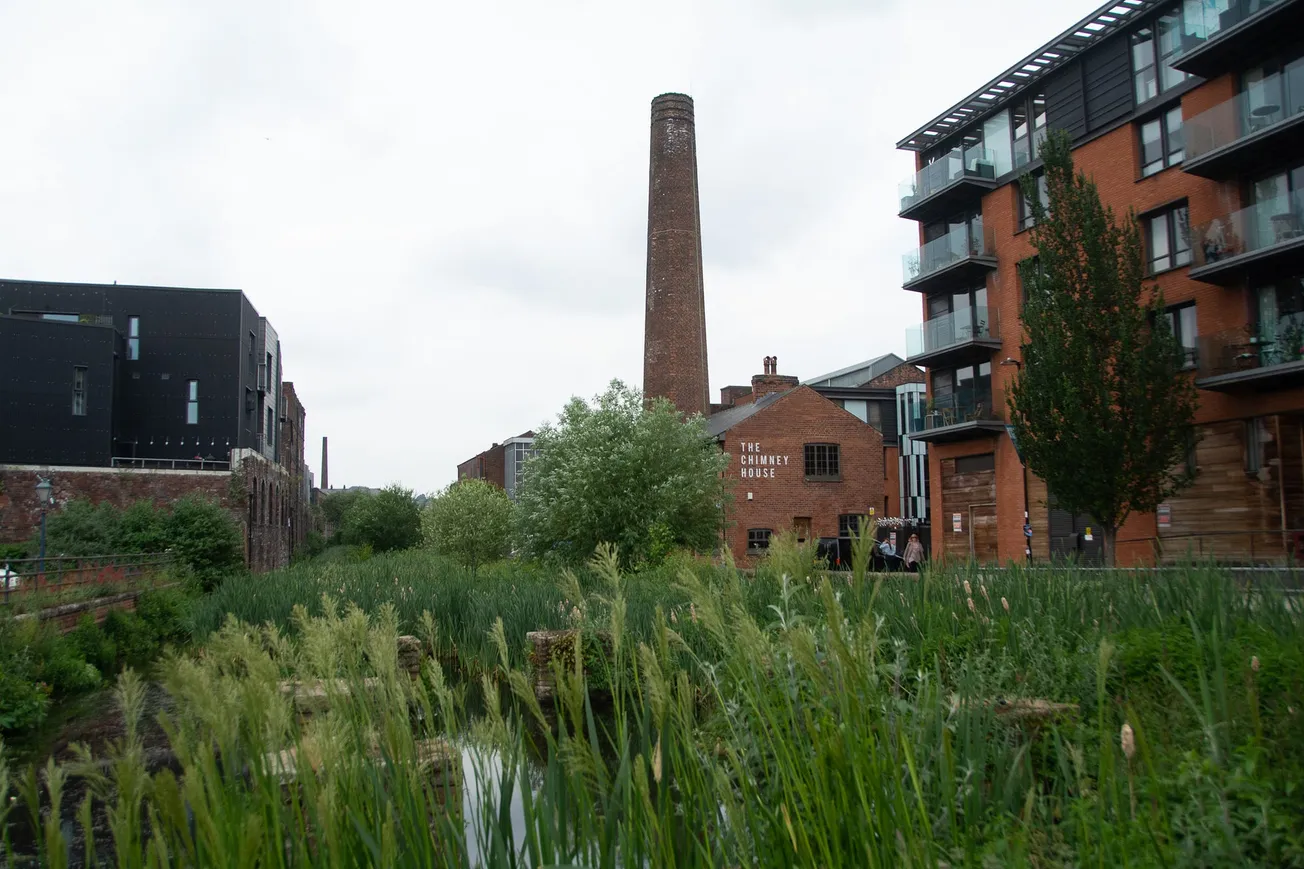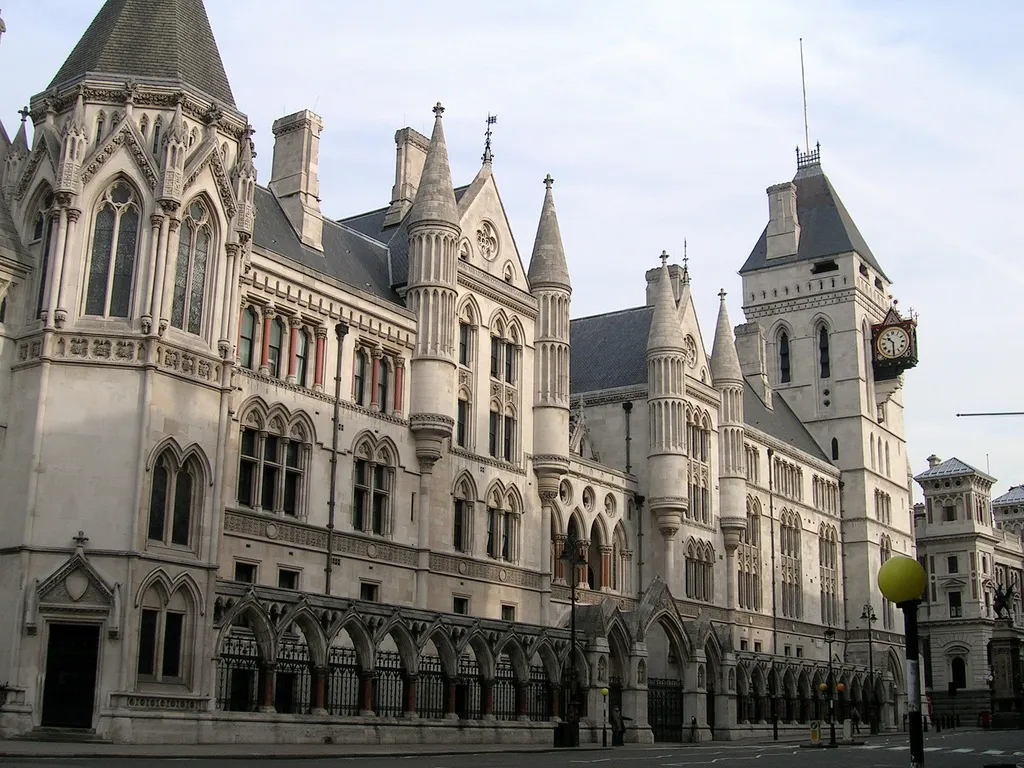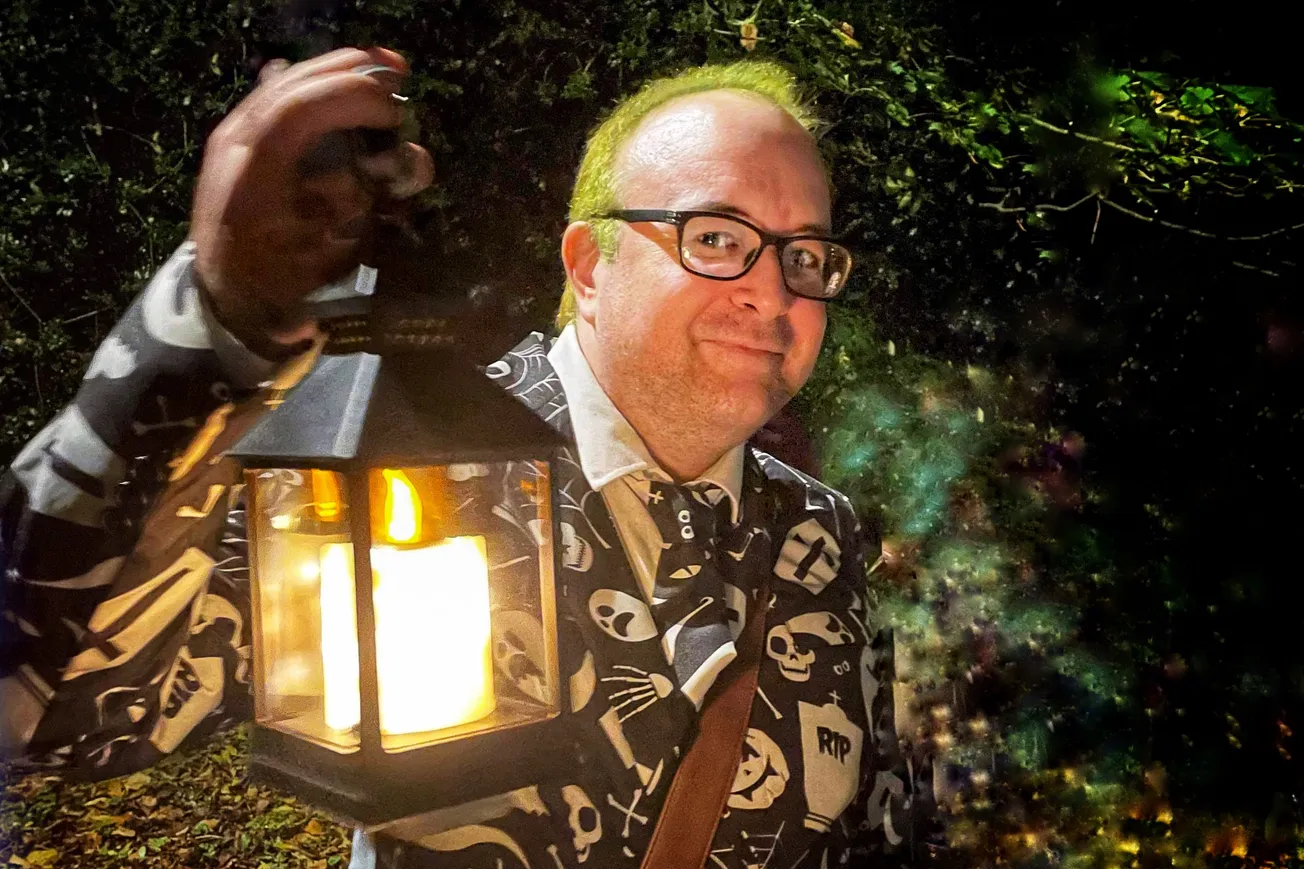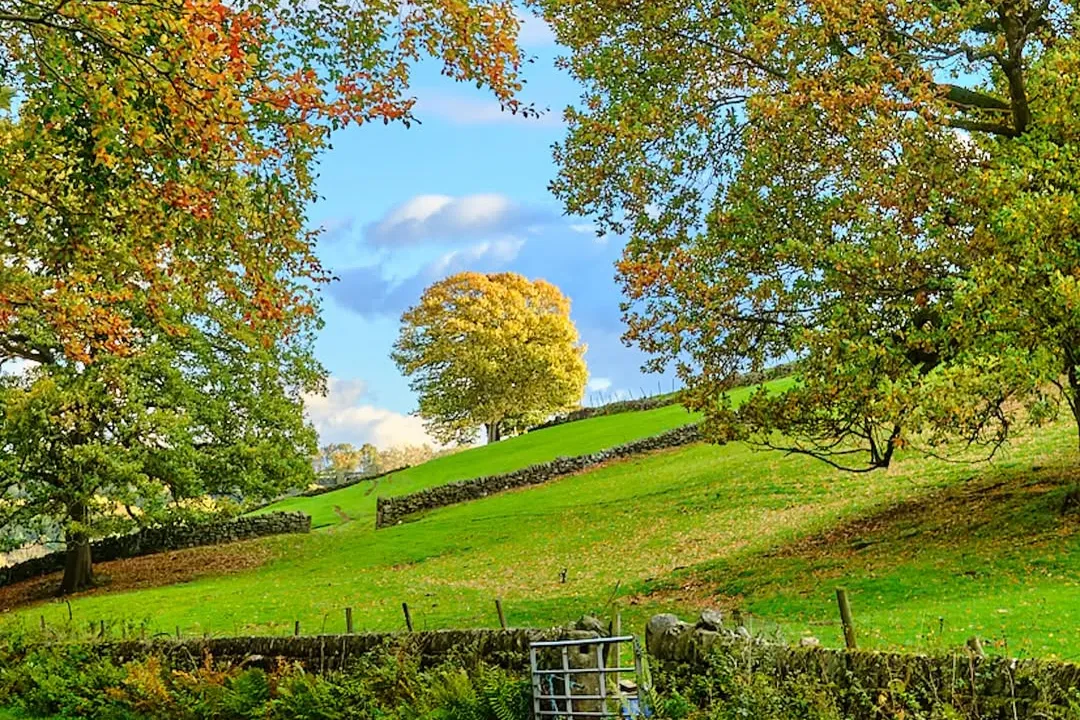The Don wells up from a dark, mineral mouth somewhere in the Pennines. A place where the shoulders of the moor turn from purple to bronze as the season shifts. Like all great rivers, it begins as an unremarkable trickle, a bog-ooze.
At its upper reaches, the river passes through five moorland dams. Its course is later interrupted by weirs where fat-bellied salmon have recently returned after an absence of two hundred years. As it flows east, away from wilderness it carves a trench through the land, racing and broadening until it reaches Sheffield, bisecting the city with its four tributaries: the Loxley, Rivelin, Sheaf, and Porter. The river then curves northward to Doncaster, before finally joining the River Ouse and spilling into the fish mud of the Humber Estuary.
The river’s name ‘Don’ comes from the Celtic ‘dana’, for water or river. The name of the Celtic goddess Danu has the same root. In times past it’s possible that small murmurings for a safe passage passed the lips of travellers crossing its waters; uneasy offerings cast into the river to appease its deities.
Whenever poet Chris Jones sees the waters of the Don, he greets it like a person. “I say ‘hello’,” he tells me. He and the Don have a personal history. In February to August 2005, he followed the river through Sheffield, writing poems inspired by the sites he stopped at.
The result was At the End of the Road, a River, a collection of fourteen poems mapped along the Don’s course. For Chris, the river is “the skeleton on which the body hangs.” The poems wove the narratives of the city together. It was his way of talking about Sheffield and its heritage. “I didn’t want to write a travelogue or explain what was going on,” he says. The poems simply reflected his emotional connection with the river.

I meet Chris on Kelham Island, in the cobblestone courtyard of the Millowners Arms. The backdrop to our conversation is the rumble of the River Don Engine. The waters around us are thick with water plants and swaying willows. When he first came to the city in 1990, he says that Kelham Island was “a bit of backwater.” It was industrial and some of the factories were still running, but the area was a sort of a red light district. “This is the place that’s changed the most,” he tells me when I ask why he wanted to meet me here specifically. “But you still get the grime and the dirt of the factories.”
The idea for a series of poems about the Don was inspired by Alice Oswald’s Dart, a sweeping poem about the River Dart in Devon. The “many-voiced poem” draws from people who lived and worked alongside it. At the time Chris was struggling to write, but the project gave him a quiet focus. He applied for £4,000 from Arts Council England, which kept him going. “This was my peaceful time, to just walk the river and think about Sheffield,” he says. In one piece, he describes it as a “city in spate.”
There are seldom people’s voices in these poems, but they do come through at times. The Factory is set not far from the Winn Gardens estate, which backs onto the River Don. It’s one of Sheffield’s most deprived estates, where according to a Channel 4 documentary earlier this year more than a third of families live in poverty. Chris’s original idea was to interview people from varying backgrounds and to thread multiple voices into his work. In the poem, he writes:
The girl on this bus talks of being in care
“It’s okay, I’ve my own room,” she tells a friend,
“and they ask me nothing if I’m back by ten.”

“It was an important time in my life,” continues Chris, who is now 52. His son Joseph had been born and his partner had returned to work as a GP. On his days off, he would go to the river. “I was trying to figure out what I was going to do.” He’d just given up his job as a literary development officer at Leicestershire County Council a few months earlier. His commute from Sheffield to Leicester was a 120-mile round trip, with Chris sometimes driving 600 miles in a week. “I was so tired,” he says. “I wanted to come home.”
Each poem is a rumination, a gentle meditation against the backdrop of the ever-present Don. His first poem, Beeley Wood, marks the first site of the river poems, in the west of Sheffield. Here he crouches amongst bluebells and celandine, in the green shade of the trees. The natural world flourishes. Then as the river veers further east, the ghosts of industry edge in. In Kingfishers there is “sky-shelved water” and birds “swerve and flash like two struck matches.” But “the carry of lorries” undercuts the “birds’ thistle-edged chatter.”
In Post-Industrial, a “man’s shadow slips the fence, as machines break into silence.” In East, “scrap-yards vie with blackened sheds, pubs and saunas keep on all night.” One unexpected industrial legacy bequeathed to the River Don is fig trees, which line the banks towards Meadowhall. Chris writes about these as well: “Here wild figs spread their leaves out wide / birches thin to the gauntest of effigies / This is the heron carving the sky.” In 1992, the Guardian reported on the figs’ origin:
The groves of fig trees came from seeds in sewage, germinated in water heated by discharges from steel mills. The trees’ ultimate glory, a crop of figs, is likely to remain a dream unless climatic changes bring the Mediterranean fig wasp to Sheffield.

Centuries of such human activity turned the Don into a fetid rainbow of colours. Once one of the finest salmon rivers in the country, by the 70s and 80s you “wouldn’t go anywhere near it,” David Clarke tells me. “The river was green,” he says. “The slaughterhouses used to pour all the blood into the Don.”
David is a professor at Sheffield Hallam University, and the co-founder of its Centre Contemporary Legend research group. Like Chris, he feels a connection with the river. Growing up, he heard stories about the River Don from his grandparents who had been cutlers and steelworkers. He studied archaeology for his undergraduate degree, but realised he was more interested in the stories and oral histories, rather than the science, of the things he uncovered. Another degree, this time in folklore, beckoned.
I started working on this story — or thinking about it, at least, a few months ago. I wanted to know what it is about the Don that invited folkloric tales. I’d been drawn to the river’s name and its associations with the Celtic goddess. I was also morbidly fascinated by a suggestion that human sacrifices — either literal or metaphorical — had been offered to the river. “It’s the source of all life,” explains David. “If you go back to prehistoric times, rivers and springs, and where water came out of the earth, these were sacred places.” Once uncorrupted and pure, attempts to tame the river through damming and alterations to its course led to disasters such as the Great Sheffield Flood of 1864.

“It’s been used and buried,” he says. “It’s almost like a living being that reasserts itself and causes havoc.” When the Dale Dyke collapsed in 1864, 700 million gallons of water surged into the River Don. News of the flood, which killed 240 people, reached as far as Northern Ireland. The Ballymena Observer reported bodies lying “in the mills, and the mud, and rains” between Wardsend and Sheffield. In 2007, the Don flooded again, claiming 13 lives.
Rivers act as boundaries both physically and metaphorically. At Wardsend Cemetery, an ivy-tangled plot near Hillsborough, crossing the river becomes symbolic. You leave the world of the living and enter the realm of the dead. Wardsend is sometimes called “World’s End.” Gravediggers who wanted to get to the cemetery and bury the bodies had to journey over its bridge, the ancient Styx in Sheffield.
“You always get ghosts associated with water,” says David. He points to a medieval rhyme: “The shelving, slimy river Dun / each year a daughter or a son.” Though rooted in practical advice (“Beware”), the poem lends a sinister quality to the Don: the great life-giver that also snatched souls away. My interpretation of the rhyme is that the river was a site of mishap and tragedy. But nineteenth century historian Joseph Hunter seems to think it was a reference to animal and human sacrifices.
Also linked to the Don is the myth of the Dragon of Wantley. It’s a seventeenth century comical ballad that became popular during the eighteenth and nineteenth centuries. It tells the tale of how the beast was slain by a knight — Moore of Moore Hall — on Wharncliffe Crags, a gritstone outcrop near Stocksbridge that overlooks the Don.

The dragon has “two furious wings” and a “sting in its tail” and hungers for everything in its path. He eats trees and buildings — even children. “Devoured he poor children three / that could not with him grapple / And at one sip he eat them up / as a man would eat an apple.” Moore goes to Sheffield for a suit of shining armour. After a battle, the dragon is pricked in its “arse-gut” and tumbles down dead. The story is depicted in a bas-relief frieze that can be seen at Sheffield Town Hall.
Throughout history, rivers have been personified in literature, their changes through space and time given human characteristics and moods. For Chris’ final poem, he gives the Don a voice. In Meadowhall, the river speaks “clear over the north-bound traffic,” in a triumphant, rippling warning:
So much for Mammon
and all you take from it
those loose fittings you cling onto
in the flood of your lives
for I will shimmer through
this valley till it cracks and gives
see your houses topple
streets furrow under trees
before I quicken swell
and wash black ashes to the sea.
We hope you’re enjoying The Tribune so far. If you are, we’d love you to consider becoming a member. For just £7 a month or £70 for the year, you get all of our journalism direct to your inbox. There will never be any annoying ads or pointless, “clickbait” stories, and all our newsletters will be well-researched, well-written and fact-checked before we send them out.
But as well as getting all our stories, you’ll also be helping build something that will serve the city of Sheffield for years to come. As you may have read in our previous newsletters, traditional media companies are unlikely to be sustainable in the long term. But The Tribune’s model is based on readers and not advertisers. This means the more of you join, the better we can make it. Thank you.
Comments
How to comment:
If you are already a member,
click here to sign in
and leave a comment.
If you aren't a member,
sign up here
to be able to leave a comment.
To add your photo, click here to create a profile on Gravatar.







